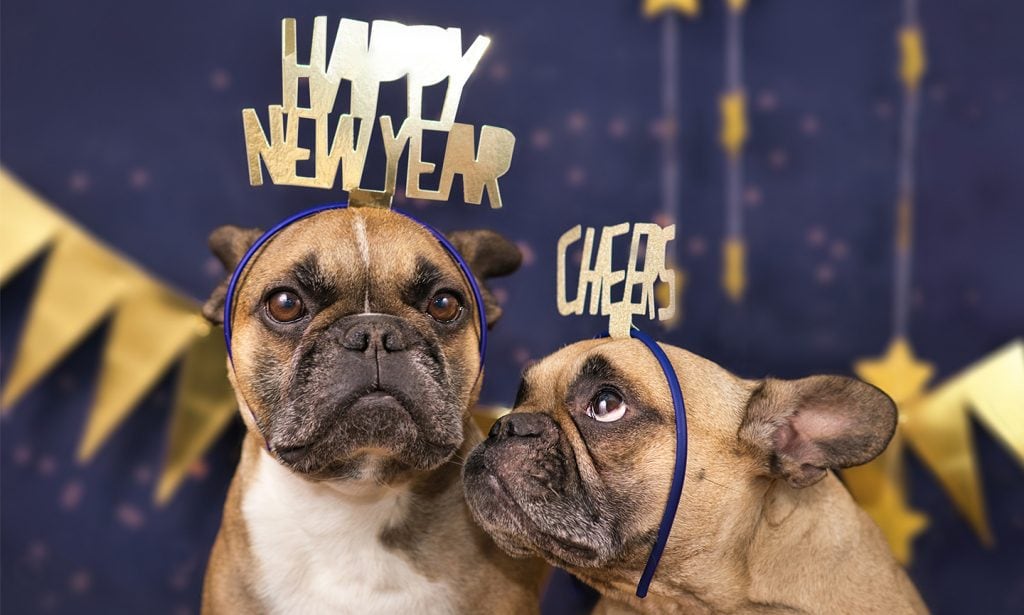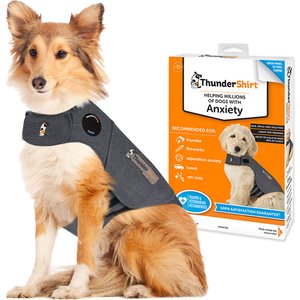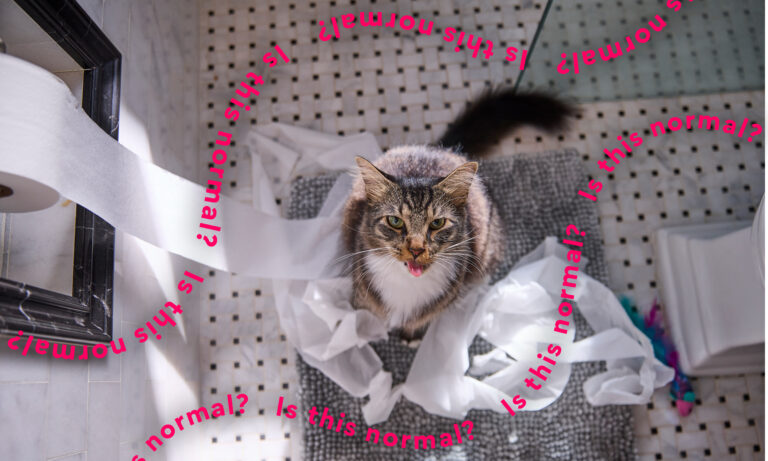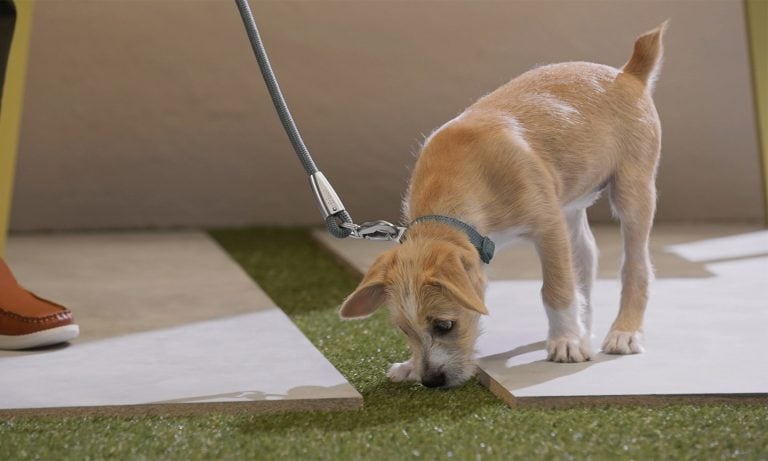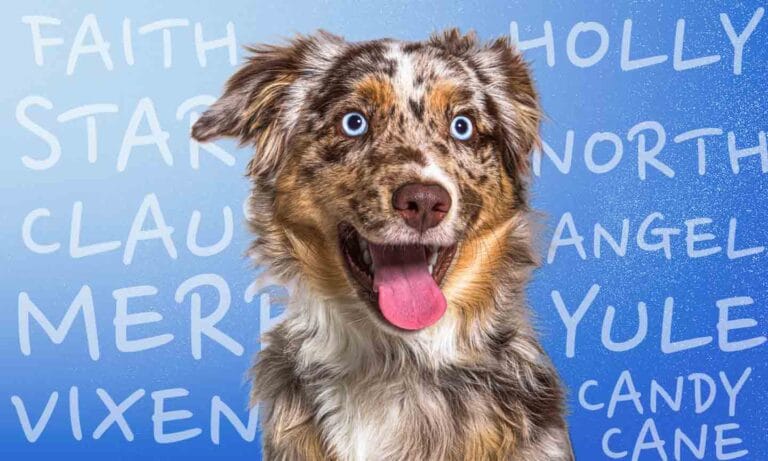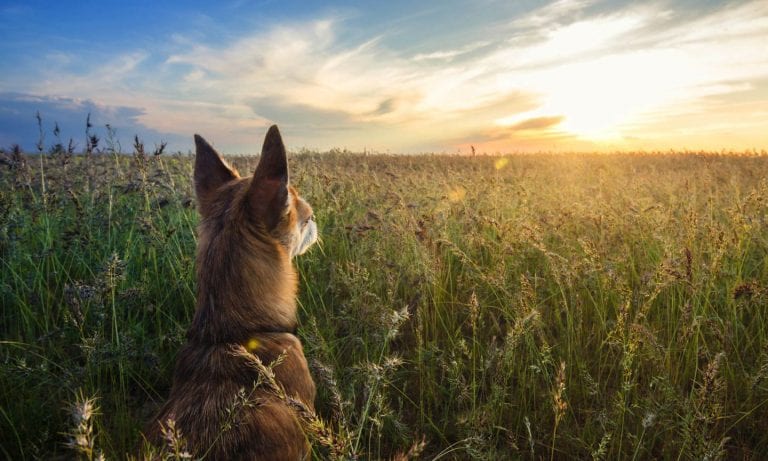Do you hope to celebrate New Year’s Eve with pets, but have a four-legged pal who doesn’t like all the commotion? Read on for expert tips to help your dog or cat stay safe, remain calm and have fun as the clock strikes midnight.
Give Them a Safe Space
A lot of the fun of a New Year’s Eve party comes from the glitter, sequins and noise makers, says Dr. Jessica Romine, DVM, DACVIM-SAIM, a veterinary internal medicine specialist at BluePearl Pet Hospital in Southfield, Michigan, but many dogs and cats may be startled by the surprise noises and decorations.
“It’s important to assess your individual pet’s reactions to all that noise, and give them a safe, quiet place to escape to if they [become overwhelmed],” Dr. Romine says. “But for dogs that get very amped up [by] people dancing and celebrating, it can be very helpful to train them to go to a particular spot, such as a favorite dog bed, with a command such as ‘go to your spot’ or ‘settle."
Consistent training and guidance throughout the year can help your pet keep anxiety levels to a minimum when something outside the ordinary happens.
“A lot of dogs gain confidence and show lower anxiety levels when given direction and guidance, rather than just being pet,” Dr. Romine says. “Practice going to the bed throughout the year, not just around holidays or parties, and be sure to reward with pets and treats, and give them things like puzzle toys, chews or KONGs stuffed with frozen treats as a reward for staying put.”
- Be sure there’s a bedroom or other room where they can be placed, and make sure that party guests know to keep an eye out for pets underfoot.
- Play some calming music. Turn it on in a quiet room to dampen the party noise and fireworks.
- Both cats and dogs like to have their own place to hide, like under a human bed, in a quiet room or in a cozy kennel, like Frisco’s soft dog crate, where they can get away from the hubbub. Frisco’s Orthopedic Sherpa Cuddler and Cushion dog and cat bed is another great option, thanks to a foam base that offers calming, orthopedic support.
Find out how to create a zen space for your pet.
Décor Don’ts for a New Year’s Eve With Pets
It’s also important to keep pets from chewing or swallowing those streamers and glittery confetti. Decorations certainly create a festive New Year’s Eve ambiance—but they can tempt curious cats and cause unforeseen life-or-death medical issues.
- Cats are often attracted to tinsel or ribbon, and these long strings can cause some of the most dangerous intestinal blockages (called linear foreign bodies) if they swallow them and they pass into their intestines.
- Dogs—forever sticking their muzzles where they don’t belong—should be kept away from neat shiny things, too. For a dog friendly New Year’s Eve, ditch decorations that could make new chew toys.
“Some dogs are very indiscriminate eaters and will happily chew and swallow any new novelty, such as decorations, masks or food off of plates, so keep all these items high enough to keep them safe,” Dr. Romine says.
Keep Hors D’oeuvres Out of Reach
Speaking of “indiscriminate eaters,” dogs and cats are always on the lookout for delicious, easy-to-access snacks. If you’re concerned about New Year’s pet safety, be sure to provide a trash receptacle for your guests’ disposables that your pets can’t access.
“Our pets will be very tempted by hors d’oeuvres, plates left on chairs or coffee tables, and all the other tasty snacks,” Dr. Romine says. “Be sure to provide a clear place for guests to throw out used plates and uneaten food, out of the reach of animals.”
What's off the menu? More from Dr. Romine:
- Pet-safe goodies, like the on-theme Blue Dog Bakery Doggie Paws Gingerbread Flavor Dog Treats, are a suitable holiday treat, but do not allow guests to feed them human foods. (Wondering how to nicely ask guests to refrain? An etiquette expert has great advice.)
- High-fat foods, including rich foods like cheese, sausages and deli meats, and fried foods are dangerous to animals because they can cause pancreatitis, a painful condition that can quickly become very serious.
- Most pet owners are aware of the risks of chocolate, but also be sure to watch for products with the sugar substitute xylitol. This can cause low blood sugar and liver failure in dogs.
- Alcohol is a no-no for pets, too. Alcohol can cause vomiting, diarrhea and neurologic issues in pets. This is a NEVER EVER.
See what foods your pet should never eat.
If your cat or dog eats something they shouldn’t have, call your local emergency veterinarian for advice. Dr. Romine also suggests contacting the ASPCA Animal Poison Control Center (1-888-426-4435) or Pet Poison Helpline (1-855-764-7661). A consultation fee may apply.
“They have trained veterinary professionals, including veterinary toxicologists, who can tell you the best way to help after an animal may have been exposed, whether it is to induce vomiting, watch and monitor or head to the animal ER,” Dr. Romine says. “They can also create a case so the emergency vet can talk directly to them for follow-up if needed. Whether or not to make an animal vomit depends on what they ate and how long ago, and each case is different.”
Desensitize Pets to Loud Noises
Fireworks, noisemakers, explosions and loud music during New Year’s Eve parties can make just about anyone jumpy—but some dogs and cats can become especially agitated, Dr. Romine says. To help them get used to the noise before the celebrations begin, try desensitizing them.
“Just like on the Fourth of July or in thunderstorms, dogs and cats can become very alarmed by fireworks, music and celebration at New Year’s Eve,” Dr. Romine says. “Before the holiday, you can work to slowly desensitize them.”
- You can find animal desensitization audio recordings on Spotify and YouTube that can be played to help animals become less reactive to noises such as fireworks, thunder, crying babies and barking dogs.
- Start with them [on a low volume] and slowly increase the volume over time, to help your pet become accustomed.
Try Anti-Anxiety Solutions
Other options for anxious dogs and cats include anti-anxiety products, Dr. Romine says. The Thundershirt, herbal supplements, calming pheromones and diffused pet-safe essential oils are just a few examples of over-the-counter choices that can help.
“The Thundershirt can help some dogs a ton,” Dr. Romine says, recommending the snuggly fitted shirt that calms dogs and cats with constant, comfortable pressure. Different dogs respond differently, but a lot of dogs are very calmed by the hugging, supportive sensation.”
- Calming pheromones targeted specifically to cats and to dogs can help some pets, too.“The nice thing about Feliway plug-in diffusers for cats or Dog-Appeasing Pheromone (D.A.P.) spray is that they are effectively risk-free, and animals do not develop a tolerance,” Dr. Romine says. “If it works, it will keep working.”
- Do not keep animals in closed rooms with diffusers. Cats in particular are much more sensitive to essential oils, but dog's can also be impacted. Oils are easily inhaled and absorbed through the skin, and can be ingested. Once inside a pet's body, essential oils can cause seizures, vomiting, difficulty breathing, liver failure and pneumonia. See what essential oil diffusers are safer for pets.
Of course, there are some good prescription anti-anxiety medications that work wonders on nervous pets. Dr. Romine says the newer drugs are designed to lower anxiety levels without overly sedating the pet so that they can have more positive experiences and learn to be less reactive over time.
Discuss over-the-counter, like VetriScience Composure Behavioral Health bite-sized dog chews, and prescription options with your pet’s veterinarian. “And always try out new supplements or medications before the big event, so you know how your particular cat or dog will react,” says Dr. Romine.
Find a complete round-up of options for calming aids for pets.
Distract with Toys
If you’re wondering what to do with dogs on New Year’s Eve, we have one word for you: toys—especially if your pal is very toy-motivated, Dr. Romine says.
- If you’re feeling particularly festive, pick up a toy with a New Year’s Eve theme, like the P.L.A.Y. Pet Lifestyle & You Puppy Love Barking Bubbly Squeaky Plush Dog Toy.
- Playing with them in a game of tug or fetch may help, but a lot of pets will be too worried to play. It’s a great idea to have toys and chews for them, but don’t force anything.
- Before December 31 rolls around, find out your pet’s highest-value treat and have it ready.
“What really lights them up the most? Have this on hand to provide motivation and distraction,” Dr. Romine says.
Tag Them—Just in Case
Just in case the fireworks, celebrations or other potentially scary events make your cat or dog dash out the open door, make sure your pet is wearing a collar with an ID tag that can be read clearly, like the GoTags personalized stainless steel ID tag, and has your contact information listed.
- For indoor cats, the tag should also indicate that this is an indoor pet, so people who may read the tag know he or she has escaped and shouldn’t be outside.
- Additionally, if your pal isn’t already microchipped, go to the veterinarian right now and have it done. If they are microchipped, make sure your contact information is up to date.
“I recommend having all animals microchipped in case they slip out of their collar,” Dr. Romine says. “Be sure to register your pet’s microchip and keep that information up-to-date on the microchip website.”
Get all the details about microchipping your pets.
Designate a Point Person
Our last tip: Just as you designate a driver on New Year’s Eve, think about designating a pet watcher, too, to make sure your dog or cat is having as much fun as you are.
“Be sure someone in the household is designated to be in charge of keeping an eye on the animals,” Dr. Romine says.
This designated pet watcher should be responsible for keeping the animals safe and happy, taking dogs out for bathroom breaks, and ensuring that they have access to food and water. This way, “none of these tasks get overlooked in the hustle and bustle of party prep and celebrating,” Dr. Romine says.
Share:
